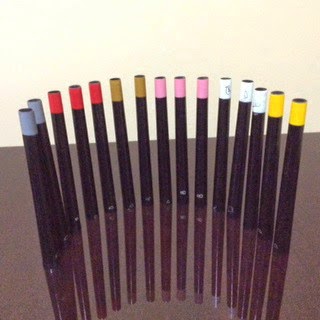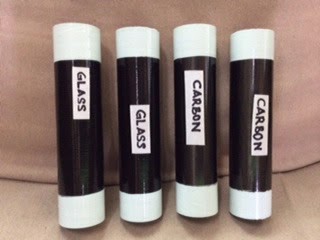Have you ever seen a container or truck being loaded with Yarn?
The packaging of yarn is either in cartons, or in bales or in Pallets. And the way , the cartons or bales or pallets are designed , not for the optimum shipment cost, but for optimum handling and storage . This causes a huge burden of extra freight charges which the buyer pays on account of usual lazy thinking of the Industry.
There is never an attempt to find out, the best size of the carton, which will fit the container or truck and usually the truck carries thin air on account of lower loading from the design of cartons.
Anyway, assuming that the cartons do fill up the load of the truck. There is still the big correction, which the Industry needs to make on the size of the cone.
The 6 inches take up cones were suitable for the Industry in the 18th century and the whole trade was limited to small volumes and small cones and the weight of the cones was around few ounces. Since then the Industry has scaled up, but the cone size still stands in time. Though, now the cones are of 1.89 kgs . However, what is sacrosanct of 1.89 kgs. There are some who would go in to take 2.5 ks on 6 inches traverse.
It is about time that the Industry switches to 8 inches traverse and takes delivery of yarn in larger packages of 3 kgs +. The large packages bring
Efficiency to the spinners
Efficiency to the weavers
A wobbling 60% higher loading per container
Hence higher sales value per container
Higher Cash Flow by 60% per container.
Imagine, a buyer who takes 100 containers per month in Americas from Asia, now will only need 50 containers for the same volume of supplies.
The annual savings of customers, who import large volumes can be as much as 50% total cost of freight.
Eg Freight from Asia to South America : USD 4000 Per container average.
If importer imports 200 containers per month : Cost : 200 x $4000 = $ 800,000
Savings with just importing 8 inches packages : 60% : $ 480,000
Saving per year : $ 6 Million
Does any mill have scope to profit $6 million otherwise.
And what does it need to bring about this change : Simple addition of 8 inches rewinders for existing spinning mills and for new mills to order only Auto Coners with 8 inches drum. A time, will come, when all of it moves to jumbo cones of10 inches. However, let it first take this small step forward.
It is about time, Schlafhorst and Murata look at 8 inches auto coner seriously. The time of 6 inches traverse is gone.
The filament Industry works only on 8 inches and 10 inches and there is no reason, why spun industry cannot take a clue from other substrates.
The lazy thinkers in the Industry will still find many excuses to remain in their comfort zone. Innovators will win.
The packaging of yarn is either in cartons, or in bales or in Pallets. And the way , the cartons or bales or pallets are designed , not for the optimum shipment cost, but for optimum handling and storage . This causes a huge burden of extra freight charges which the buyer pays on account of usual lazy thinking of the Industry.
There is never an attempt to find out, the best size of the carton, which will fit the container or truck and usually the truck carries thin air on account of lower loading from the design of cartons.
Anyway, assuming that the cartons do fill up the load of the truck. There is still the big correction, which the Industry needs to make on the size of the cone.
The 6 inches take up cones were suitable for the Industry in the 18th century and the whole trade was limited to small volumes and small cones and the weight of the cones was around few ounces. Since then the Industry has scaled up, but the cone size still stands in time. Though, now the cones are of 1.89 kgs . However, what is sacrosanct of 1.89 kgs. There are some who would go in to take 2.5 ks on 6 inches traverse.
It is about time that the Industry switches to 8 inches traverse and takes delivery of yarn in larger packages of 3 kgs +. The large packages bring
Efficiency to the spinners
Efficiency to the weavers
A wobbling 60% higher loading per container
Hence higher sales value per container
Higher Cash Flow by 60% per container.
Imagine, a buyer who takes 100 containers per month in Americas from Asia, now will only need 50 containers for the same volume of supplies.
The annual savings of customers, who import large volumes can be as much as 50% total cost of freight.
Eg Freight from Asia to South America : USD 4000 Per container average.
If importer imports 200 containers per month : Cost : 200 x $4000 = $ 800,000
Savings with just importing 8 inches packages : 60% : $ 480,000
Saving per year : $ 6 Million
Does any mill have scope to profit $6 million otherwise.
And what does it need to bring about this change : Simple addition of 8 inches rewinders for existing spinning mills and for new mills to order only Auto Coners with 8 inches drum. A time, will come, when all of it moves to jumbo cones of10 inches. However, let it first take this small step forward.
It is about time, Schlafhorst and Murata look at 8 inches auto coner seriously. The time of 6 inches traverse is gone.
The filament Industry works only on 8 inches and 10 inches and there is no reason, why spun industry cannot take a clue from other substrates.
The lazy thinkers in the Industry will still find many excuses to remain in their comfort zone. Innovators will win.






